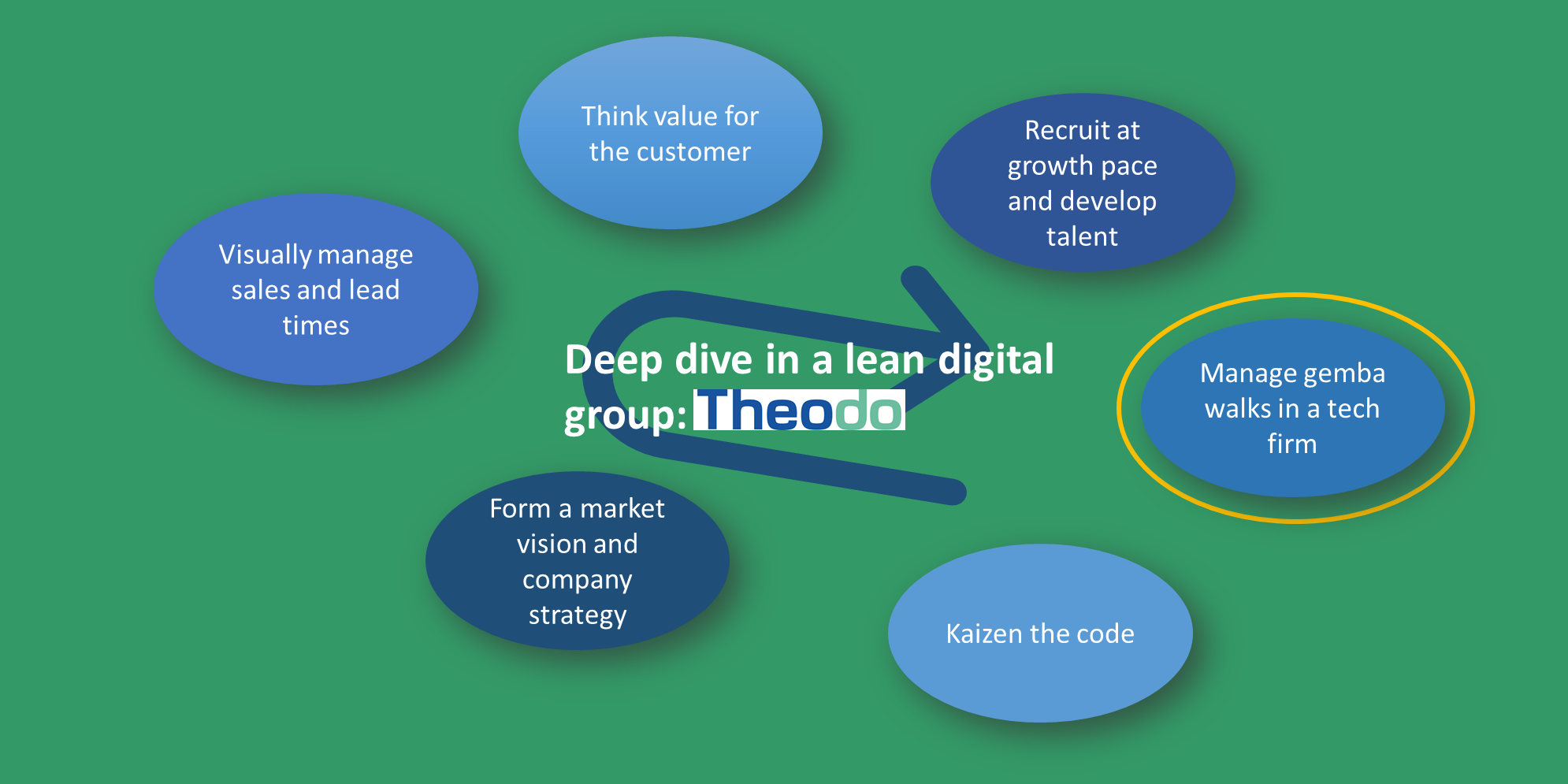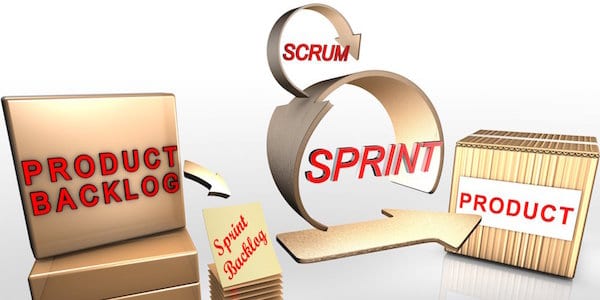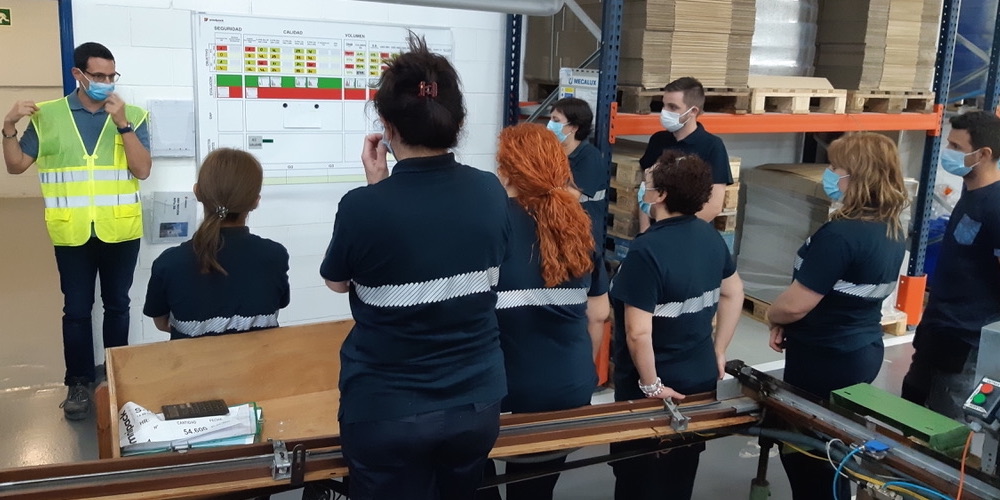
Re-start with a clean slate
CASE STUDY – From client and supplier to partners-in-lean: how solving a problem together transformed the relationship between a Dutch hospital and the laundry supplying clean garments to it.
Words: Jonny Mooi, Willem Nieuwenhuis and René Aernoudts
THE CLIENT’S PERSPECTIVE
by Jonny Mooi, Head of Logistics, UMCG Eemspoort
Every day, in our hospital, around 2,200 employees need a clean uniform. Garments are dispensed by five machines located in different parts of the hospital – people scan their badge and receive what they need.
Back in 2015, we realized we were only able to provide 85% of our people with the garments they needed when they needed them (and without having them try multiple machines before getting what they were looking for). To us, this was unacceptable.
To try and solve this irritating problem, we contacted Rentex Floron – a long-time supplier of ours, which is in charge of cleaning and delivering the garments – and together we were able, over the course of three years, to bring the percentage of people getting their clothing when they needed it up to 98%.
Along the way, we discovered that the problems we had often thought depended on Rentex Floron were actually a result of our own lack of understanding of the process. When we began looking at the problem through our lean lenses – which meant going to the gemba, asking questions, and hearing people’s problems – we immediately started to learn a lot.
The project was a success, one we decided to build upon by leveraging our now-transformed relationship with Rentex Floron. As we were busy improving the availability of uniforms, we found out we were renting over 33,000 pieces of clothing from Rentex. Not only was this an amount we didn’t need; they also occupied a lot of space in the Rentex warehouse (for which we also incurred a cost).
Willem Nieuwenhuis, from Rentex Floron, and I decided to get our teams to work together to cut the number of uniforms the hospital leased, down to 24,000. We struggled to get anywhere until, around a year ago, we decided to ask René Aernoudts at Lean Management Instituut to come and help us. Eventually, in December, we started the new project – with seven people from our hospital and eight from Rentex Floron.
At first, I was worried Rentex might decide not to invest so much time for just one client, but they did. In fact, they were very supportive and, together, we are succeeding. Willem and I have a very good relationship and understand each other well, which of course makes things easier.
Having René with us was extremely helpful. He is a very direct person – he won’t shy away from telling you to go back to the drawing board – and, because he has helped so many organizations on their lean journeys, he knows the common pitfalls and problems people encounter when they start a new initiative. He was instrumental in keeping everybody focused on the goal and, really, he represented a catalyst for change. The best part is that he guides you, without doing the work for you.
Even though our two organizations had worked together for a long time, before the clothing dispensing project our relationship had been the traditional one you imagine between a client and a supplier. I don’t like how we used to behave with Rentex: it’s not okay to complain without ever offering an alternative. By working together with them, we found we wanted to be long-term partners – not just client and supplier.
Our hospital has been a lean journey for a long time and is, therefore, quite mature in its adoption of lean principles. Opening up to our suppliers and looking at the upstream part of our value chain was a logical next step for us. I think Rentex was so open to our experiment because they, too, are on a lean journey. They saw an opportunity to improve their own process (Willem explains below).
The biggest lesson for us? Always share your problems with your suppliers. It’s critical to invite them to come and take a look at your process. We also learned that by using the same tools and discussing issues together, you end up identifying opportunities for improvement on both sides. In many ways, it comes down to learning to listen to others.

THE SUPPLIER’S PERSPECTIVE
by Willem Nieuwenhuis, Manager of Quality, Technology & Buildings, Rentex Floron
Our relationship with the Groningen University Hospital began in 1992, when we took over the work of their laundry. Despite knowing each other for so long, we had never involved them in our improvement work (for the past few years, we have brought lean to a number of our departments with several experiments).
That all changed when, in June 2015, Jonny Mooi came to me with a complaint: not everyone at the hospital could get the uniforms they needed, when they needed them. From that moment on, we started collaborating more closely with our client, which eventually pushed our lean journey in a completely new direction: we now have a better understanding of the value stream and how it flows beyond Rentex Floron’s four walls. Together, our two teams found a lot of waste in our shared value stream and gradually chipped at it, eventually managing to increase the number of workers who got the garments they needed each day from 85 to 98%.
At the end of last year, we began a new project – its ultimate goal being learning more about each other’s systems in order to harmonize the way we work together. The project aimed at reducing the number of garments UMCG rents from us from 33,000 to 24,000. This was a bit counterintuitive: initially, some people at Rentex didn’t understand why it would be a good thing to help clients give us less money. ‘Less garments rented equals less income, surely,’ they thought. Skepticism, however, disappeared when it became clear that the sheer amount of garments we carried for the hospital was actually a problem for us and that reducing that inventory would mean less stress for our people, less costs in transportation and freed-up capacity we could now use to serve other customers. It’s actually a win-win situation, because at the same time the hospital reduced its fixed costs.
Assisting us in the project was René Aernoudts from the Lean Management Instituut. Having someone from the outside (who is, by definition, not biased) was very useful: René always challenged us to think differently about our problems, knew how to pinpoint issues in the system, and was great at motivating our people.
The collaboration with UMCG has opened our eyes to new opportunities. Today, we are trying to engage in the same way with our other clients – discussing with them how we can help each other and coordinating our efforts to achieve mutually beneficial outcomes. It’s not always easy to convince them: you need to show them they will greatly benefit from this sort of relationship.
We learned a lot from this experience. The most important lesson is perhaps that a client and supplier working together on a shared goal can achieve much more than one of the parties alone can – no matter the obstacles. We have also learned to have an open mind and always consider different ways of thinking. This project reminded us of the importance of putting yourself in your customer’s shoes, and listening to their needs. Our business is very competitive and Rentex Floron has to think bigger than just offering a washing service: we believe that this sort of collaboration sets us apart and that our clients will come to cherish it.
THE COACH’S PERSPECTIVE
by René Aernoudts, President, Lean Management Instituut
I can’t stress enough how important it is for a customer and a supplier to develop a close relationship. One obvious reason for this is the fact that there is much more to gain by looking at the whole supply chain than by just focusing on one bit of it – senior management teams at both UMCG and Rentex Floron got some great insights out of the collaboration between their organizations (for example, they discovered the seasonanility of their work – with a clear peak occurring every September when new interns join the hospital).
Companies don’t exist in isolation; they are always part of a bigger system. It’s critical to understand it well. By collaborating closely with your client/supplier, you will come to understand your own process much better than you would if you simply spent time with your own Purchasing Department buying stuff from your supplier or with your Sales department trying to understand what your customers need.
The project carried out by Rentex Floron and UMCG in Groningen is a fantastic example of the benefits of close collaboration.
For LMI, it was a privilege to work on this project. We began supporting Rentex and UMCG in their initiative by organizing a five-day workshop with the two teams, focused on kaizen and A3 thinking. First, people got to know each other. On day two, we walked the two gembas all together and created a value stream map of the current state (it’s always fascinating to see how well people know the process on paper but how little they actually understand about it in practice). We also did an analysis of the SKUs (there were 102, considering all the types of garments, sizes, etc) and used the Glenday Sieve to understand how much each SKU “weighed” on the overall volume of garments. We found that 7 SKUs represented 56% of the garments being handled. Another useful thing we helped the teams with was identifying the best locations for the different dispensing machines (part of it was simplifying the stream of “reds” – the least used SKUs – by reorganizing the way they were distributed). These tools allowed the team to get rid of a lot of garments, which in turn contributed to their goal.
It’s amazing to see that Rentex is now running this type of activity with many other clients, and how much money they are saving that was previously frozen in the warehouse in the form of inventory.
All the best to both Jonny and Willem, who were instrumental in achieving the results with their teams. Only halfway through the project, the teams have already reduced the number of garments by several thousand units – which some thought impossible at the start. It looks like they are going to achieve the full target well in time.
THE AUTHORS



Read more


FEATURE – This month, the author learns how gemba walks happen in a digital environment, where the work and information are typically hidden in computers.


FEATURE – This piece analyzes the different elements of scrum, an agile software development framework, as seen from the point of view of traditional lean thinking.


CASE STUDY – The extraordinary transformation of Kinross' Round Mountain gold mine in Nevada over the past six years shows that lean thinking can – quite literally – move mountains.


CASE STUDY – This packaging company in Catalonia has been able to cleverly balance the resolution of urgent problems and the advancement of the lean transformation. But what to do when the burning platform is no more?

